Prehlad je pogosto posledica virusne infekcije v predelu nosu ali kjerkoli na področju gornjega respiratornega trakta. Prehlad je najpogostejša okužba v vseh starostnih obdobjih.
PREHLAD: Kaj je prehlad? | Simptomi prehlada | Obisk pri zdravniku | Vzroki prehlada | Diagnostika | Zdravljenje | Konvencionalno zdravljenje | Opozorilo! | Alternativne metode | Domača zdravila | Preprečevanje | Miti o prehladu | Vprašanja in odgovori | Viri/reference
Prehlad povzroča virusna okužba nosu in grla (zgornji dihalni trakt) ter je običajno neškodljiva.
Prehlad lahko povzroči več virusnih sevov hkrati. Zdravi odrasli lahko pričakujejo, da bodo vsako leto zboleli za dvema ali tremi prehladi, dojenčki in majhni otroci pa lahko imajo še pogostejše prehlade. Večina posameznikov prehlad preboli v sedemih do desetih dneh.
Kadilci pa lahko občutijo simptome, ki trajajo dlje. Običajni prehlad ponavadi ne zahteva zdravniške oskrbe, kljub temu pa obiščite zdravnika, če se simptomi dlje časa ne izboljšajo ali se celo poslabšajo.
Prehlad je najpogostejša okužba v vseh starostnih obdobjih. Simptomi prehlada se sprožijo, ko se virus prime sluznice nosnih kanalov ali grla. Vaš imunski sistem bo odgovoril z napadom na klice s pomočjo belih krvničk, ki se imenujejo nevtrofilci.
Če vaš imunski sistem ne more prepoznati virusa, bo odgovor »nespecifičen«, kar pomeni, da bo vaše telo proizvajalo toliko nevtrofilcev, kolikor jih sploh more (ponavadi celo več, kot jih je sploh potrebnih), in jih bo po krvnem obtoku poslalo na mesta okužbe. Takšen vsesplošni napad bo sicer pobil mnoge viruse, ne bo pa vplival na kakšnih 200 vrst virusov, ki povzročajo prehlad.
Preostanek nevtrofilcev, ki se nakopiči v gručah na mestih okužb, je tisto, kar povzroča zbadanje in vnetje pri prehladu, dopolnjujejo pa ga še velike količine sluzi v nosu in grlu.
Video vsebina: Kako se razvije navadni prehlad?

Simptomi prehlada se pojavijo po enem do štirih dneh od tedaj, ko se okužite z virusom prehlada, in značilno trajajo okoli tri dni. Na tej točki je najhuje za vami, čeprav boste morda še kak teden imeli občutek zamašenosti. Med prvimi tremi dnevi, ko so simptomi najizrazitejši, ste tudi kužni (kar pomeni, da lahko prehlad prenesete na druge), zato bodite tedaj previdni.
Slika: Prehlad - kaj je, zdravljenje in preprečevanje.

Čeprav vsakdo lahko stakne prehlad, ga otroci vendarle pogosteje kot odrasli.
Prehladi so najpogostejši v »hladnem obdobju«, ki traja od pozne jeseni pa še vso pomlad. V tem času se ljudje večinoma bolj zadržujejo v zaprtih prostorih in ponavadi uporabljajo eno od oblik centralnega ogrevanja. Tesnejši stik z drugimi osebami, ki povečuje možnost izpostavljanja nalezljivim virusom, in vroč, suh zrak, ki izsuši tkivo v nosu in grlu, ustvarjata idealno okolje za virusno okužbo.
Video vsebina: Zakaj je tako težko pozdraviti navadni prehlad?

Prehlad ni nevaren, razen za novorojence. Ponavadi mine v kakšnem tednu brez posebnih zdravil. Na žalost pa prehladi oslabijo odpornost vašega telesa tako, da boste bolj dovzetni za bakterijske okužbe.
Simptomi prehlada
Simptomi prehlada se običajno pojavijo ena do tri dni po izpostavitvi virusu, ki povzroča prehlad. Znaki in simptomi, ki se lahko razlikujejo od osebe do osebe, lahko vključujejo:
- kihanje
- mrzlica
- glavobol
- izcedek ali zamašen nos
- rahle bolečine v telesu ali blag glavobol
- pritisk v ušesih in obrazu
- splošno slabo počutje
- napolnjenost glave in prsi, včasih z izcedkom iz nosu in težkim dihanjem
- suh kašelj, ki se lahko pojavlja le ponoči
- pekoče in mokre oči
- neopredeljeno trganje povsod po telesu
- stalna utrujenost
- izguba okusa in vonja
- vneto grlo
- zamašenost
- kašelj
Simptomi prehlada se običajno pojavijo v dveh do treh dneh po stiku z virusom, ki ga povzroča. Med najpogostejšimi znaki so kihanje, mrzlica in glavobol. Izcedek ali zamašen nos je pogosto spremljevalec, skupaj z rahlimi bolečinami v telesu in splošnim slabo počutjem.
Video vsebina: Simptomi prehlada.

Spremljanje simptomov je ključnega pomena, saj prehlad v večini primerov mine sam po sebi. Kljub temu pa je dobro, da se posvetujete z zdravnikom, če se simptomi poslabšajo ali trajajo dlje kot običajno. Pomembno je tudi, da se spomnimo, da prehladi niso le neprijetnost, ampak tudi priložnost za boljše razumevanje našega telesa in njegovega odziva na okužbe.
Posvetujte se z zdravnikom, če:
- ima vaš novorojenček (pod dvema mesecema starosti) simptome prehlada. Pri dojenčkih je lahko navaden prehlad resna bolezen.
- je napolnjenost tako močna, da vam otežuje dihanje, ali pa vam v prsnem košu nekaj piska (piski v pljučih), kadar dihate. Morda imate astmo.
- vas žrelo zelo boli in imate temperaturo 39 °C ali več; ali pa se vaši simptomi prehlada po tretjem dnevu poslabšajo. Morda imate bakterijsko okužbo (kot je gnojna angina), sinuzitis ali bronhitis.
- imate temperaturo nad 40 °C. Morda imate pljučnico. Nemudoma poiščite zdravniški nasvet.
- se vaši simptomi prehlada pojavijo nenadoma ob nekem sprožilnem dejavniku — kakršni so pelod, mačja dlaka ali parfumi — in/ali simptomi trajajo cele tedne. Verjetno imate alergijo.
Pri obvladovanju prehlada je ključnega pomena, da pazimo na simptome, še posebej pri novorojenčkih in majhnih otrocih. Če opazite znake prehlada pri dojenčku, ki je mlajši od dveh mesecev, je nujno, da se posvetujete z zdravnikom, saj lahko navaden prehlad zanje predstavlja resno zdravstveno težavo. Oteženo dihanje, huda bolečina v grlu ali visoka temperatura prav tako zahtevajo takojšnjo zdravniško pomoč.
Vzroki prehlada
Več kot 200 virusov lahko okuži vaš nos in grlo in povzroči prehlad. Na žalost ne obstaja absolutno zdravilo za katerega koli od njih, zato določanje tega, kateri od njih vam je povzročil prehlad, ne bo pomagalo, da bi hitreje ozdraveli.
Video vsebina: Kaj povzroča nastanek navadnega prehlada?

Prehlad »staknete« z vdihavanjem majhnih kapljic, ki se nahajajo v zraku, ko nekdo, ki že ima prehlad, zakašlja ali kihne. Okužbo pa lahko dobite tudi, če se primete površine, ki je okužena z virusom, npr. kljuke ali telefona, in potem prenesete klice v vaš nos ali v usta.
Zakaj so otroci in dojenčki pogosteje prehlajeni?
Otroci in dojenčki so bolj dovzetni za prehlad kot odrasli, saj do tedaj še niso bili toliko izpostavljeni virusom in bakterijam. Njihov imunski sistem šele pridobiva na sposobnosti zaznavanja novih patogenov in boja proti njim.
Dojenček je lahko deležen do deset prehladov na leto, preden dopolni dve leti. Poleg tega ne smemo pozabiti, da so otroci v tesnem stiku z drugimi otroki. Otroci običajno ne zakrijejo ust, ko kašljajo in kihajo in si tudi ne umivajo rok, preden se dotaknejo obraza.
Virus prehlada lahko na površinah preživijo več ur, dojenček pobira predmete, ki so se jih drugi dotikali in kaj hitro lahko "stakne" neprijetno prehladno obolenje. Dojenček se lahko okuži, če se dotakne predmeta s tovrstnimi mikroorganizmi, ki povzročajo prehlad, in se nato dotakne ustnic, oči ali nosu, kjer se razvoj in razmnoževanje virusov in bakterij prične.
Diagnostični postopki
Če je vaš prehlad tako mučen, da vas je spravil k zdravniku, vam bo verjetno zdravnik pregledal grlo in ušesa ter vam verjetno vzel bris sluznice žrela (po zadnji steni žrela bo podrgnil s paličico, ovito v vato, da bi ugotovil, ali morda niste okuženi z bakterijo in ne potrebujete antibiotikov.
Zdravljenje prehlada
Konvencionalna in alternativna zdravljenja imajo isti cilj: vašemu telesu čim lažje omogočiti, da se bori z virusom prehlada s čim boljšim olajšanjem simptomov zbadanja in občutka zamašenosti. Ustrezen počitek je glavni kjuč do uspeha zdravljenja prehlada. Morda boste ugotovili, da potrebujete 12 ur ali celo več spanja preko noči, medtem ko se borite s prehladom.
Pomembno je tudi pitje vode. Sluz prosto plava v dobro prepojenem telesu in vam bo pomagala, da se izognete okužbi ali jo premagate. Zdrava, vlažna tkiva virus težje okuži kot pa suha tkiva. Če imate vročino, bo vaše telo uporabilo toploto za uničenje virusa prehlada.
Video vsebina: Kako pozdraviti navaden prehlad?

Dajanje zdravil proti vročini lahko pravzaprav spodkopava prizadevanja vašega telesa v boju zoper prehladni virus. Seveda pa morate pri temperaturi nad 41 stopinj Celzija poklicati svojega zdravnika.
Nasveti za zdravljenje prehlada pri dojenčkih:
- vašemu otroku naj bo udobno.
- otroku dajte tekočino, dojenčki, stari 6 mesecev ali manj, naj pijejo predvsem materino mleko.
- otrok naj veliko počiva, da se njegov organizem čimprej regenerira
Noseče ženske ali doječe matere se morajo prej posvetovati s svojim zdravnikom, preden vzamejo katero koli zdravilo zoper gripo, vključno z zdravili brez recepta in zdravilnimi zelišči.
Konvencionalna medicina
Proti virusu prehlada ne obstaja nobeno specifično zdravilo, vendar pa boste bolezen omilili, če si boste zdravili simptome. Ibuprofen lahko omili trganje, medtem ko lahko paracetamol in acetilsalicilna kislina le še poslabšata zamašenost. Nikoli ne dajajte aspirina otroku z vročino, raje mu dajte paracetamol. Če vas boli grlo, grgrajte kolikorkrat hočete slano vodo (pol čajne žličke soli v skodelici vode).
Morda vas bo premagala skušnjava in se boste predali reklamnim oglašanjem ter preizkusili enega od mnogih preparatov proti »gripi in prehladu«, ki jih lahko kupite brez recepta, vendar raje dvakrat premislite.
Video vsebina: Simptomi prehlada in pomoč.

Takšna kombinirana zdravila zelo verjetno vsebujejo zdravila proti simptomom, ki jih vi sploh nimate, in boste zato jemali povsem po nepotrebnem preveč zdravil. Povsem se tem zdravilom izogibajte pri otrocih pod 13 leti. Celo zdravila proti prehladu, ki naj bi bila namenjena predvsem otrokom, ponavadi prav nič ne učinkujejo na to starostno skupino, lahko pa povzročijo zaspanost in vse skupaj le še poslabšajo.
Dekongestivi, ki jih dobite brez recepta (kakršno je psevdoefedrin), lahko pomagajo, vendar le začasno. Če pa ta zdravila redno jemljete več kot pet dni, bo morda vaše telo odgovorilo s »preobratom« in proizvajalo še več sluzi ter poslabšalo zamašenje.
Opozorilo!
Nikoli ne dajajte acetilsalicilne kisline otroku, ki je prehlajen, dajte mu namesto tega raje paracetamol. Reyev sindrom, nevrološka bolezen, ki lahko povzroča komo, okvaro možganov in smrt, je povezan z uporabo acetilsalicilne kisline pri otrocih med 4. in 15. letom. Reyev sindrom je redka bolezen, vendar se značilno pojavlja po virusni okužbi: en dan do tri dni po tem, ko se je virus naselil, postane otrok izredno utrujen, močno bruha in je morda pretirano razburljiv, v deliriju in/ali zmeden. Reyev sindrom je urgentno stanje, ki terja nujno intravensko nadomeščanje tekočin.
Alternativni načini
Bistven je čas: začnite zdraviti svoj prehlad, brž ko začutite prvi simptom. To zlasti velja za zeliščna zdravila — takojšen odziv omogoča hitrejšo in lažjo ozdravitev.
Aromaterapija
Zeliščna para lahko olajša zamašitev. Če pa je para vroča nad 70 stopinj Celzija, bo ob stiku tudi pomorila klice. Izberite si evkaliptus (Eucalyptus globulus), gaulterijo (Gaultheria procumbens) ali poprovo meto (Mentha piperita). Nekaj svežih listov ali kapljic zeliščnega olja dajte v lonec s kipečo vodo. Čez glavo si dajte brisačo, nagnite se nad lonec, tako da boste v parnem šotoru, in vdihavajte paro.
Zelišča
Ehinaceja (Echinacea spp.) lahko, če jo vzamete ob prvih simptomih, zmanjša jakost in skrajša trajanje prehlada in celo prepreči, da bi prišlo do razbohotenja okužbe. Ehinaceja verjetno spodbudi imunski odgovor in poveča odpornost zoper vse okužbe. Lahko jo dobite v obliki kapsul ali čaja: 2 čajni žlički korenine ehinaceje dajte v skodelico vode, pustite počasi vreti 15 minut, nato pa spijte tri skodelice na dan.
Hidrastis (Hydrastis canadensis) pomaga očistiti sluz iz grla. Vsebuje tudi naravni antibiotik barberin, ki pomaga preprečevati bakterijske okužbe, ki pogosto sledijo prehladu. Namakajte pol do 1 čajno žličko hidrastisa v skodelici vrele vode 10 do 15 minut, popijte tri skodelice dnevno.
Video vsebina: Zelišča za tretiranje neprijetnega prehlada.

Za dober »čaj proti prehladu« zmešajte enake dele bezga (Sambucus nigra), poprove mete (Mentha piperita) in rmana (Achillea millefolium) in namakajte 1 do 2 čajni žlički te mešanice v skodelici vroče vode. Ta mešanica lahko pomaga telesu proti vročini pa tudi proti trganju, zamaše-nosti in vnetju.
Česen (Allium sativum) verjetno skrajša trajanje prehlada in ga omili. Kot kaže, deluje v vseh oblikah: kot kapsule ali tablete, kot olje, ki ga vtrete v kožo, ali kot cel česen, ki ga popečete ali skuhate skupaj z drugo hrano. Če se odločite za kapsule, vzemite po tri trikrat dnevno, vse dokler prehlad ne preneha.
Homeopatija
Simptomi prehlada pogosto dobro odgovorijo na homeopatska zdravila. Odmerek je 12c, ki ga vzamete vsaki dve uri, največ štirikrat. Gelsemi-um vam lahko pomaga, če vas trese mrzlica, če vas zbada v rokah ali nogah, če ste utrujeni ali pa če vas boli grlo.
Če imate občutek, da se vam bo vaš nos, iz katerega se cedi, vsak čas vžgal, če se vam solzijo oči in če pogosto kihate, potem lahko poskusite z zdravilom allium cepo. Če ste razdraženi in se vam cedi iz nosu, ki je ponoči hudo zamašen, vzemite nux vomico. Za lajajoč kašelj, pekoče grlo in grenak okus, ki je že nekaj časa prisoten v vaših ustih, poskusite z aconitom.
Način življenja
Vzdržite se kajenja, še posebej, kadar ste prehlajeni. Kajenje napada sluznice in pljuča ter povečuje občutljivost za vse vrste okužb na dihalih, vključno s prehladom. Ko pa enkrat že imate prehlad, dim vzdraži že vneto tkivo in otežkoča celjenje in ozdravitev.
Prehrana
Dobra prehrana je bistvena za odpornost in okrevanje.
Video vsebina: Trpite za prehladom? Jejte to hrano!

Jejte uravnoteženo hrano. Vzemite dodatke vitaminov, da si zagotovite dnevne potrebe po vitaminu A, vitaminih B kompleksa (vitamini Bj, B„ B., Bf, folijska kislina) in vitaminu
Domača zdravila
Jejte trde bonbone ali pastile proti kašlju za ublažitev bolečin v grlu. Izogibajte se mentolu, ker lahko pospeši osušitev. Namažite se z vazelinom v notranjosti in okolici nosu, da se zavarujete pred razdraženjem kože.
Video vsebina: 6 domačih pripravkov za borbo proti prehladu!

Telo naj bo dobro hidrirano, zato spijte vsaj 10 kozarcev vode dnevno. To bo nadomestilo tekočino, ki jo izgubljate z znojenjem in izcedkom iz nosu, in zmanjšalo zamašenost v nosu in v prsnem košu. Imejte kozarec vode na nočni omarici in pijte vodo tudi ponoči. Ovlažite si sobo (zlasti med hladnejšimi meseci, ko centralno gretje suši zrak), da bosta vaš nos in grlo vlažna.
Preprečevanja prehlada
Močan imunski sistem je najboljša obramba zoper vse okužbe, vključno s prehladi.
Podprite naravno odpornost svojega telesa s tem, da dobro jeste, ne kadite in pijete dovolj vode vsak dan. Čim bolj zmanjšajte stike z ljudmi, ki so prehlajeni, ali pa vsaj ne uporabljajte z njimi skupnih brisač, pribora ali pijač. Virusi prehlada pogosto preživijo cele ure na odprtem, na ročajih vrat, na denarju in na drugih površinah, zato si pogosto umivajte roke.
Video vsebina: Nasveti za preprečevanje nastanka navadnega prehlada.

Če imate prehlad, se potrudite, da ga zadržite samo zase. Močno kihanje lahko odnese viruse prehlada celo 4 metre daleč, zato si vedno pokrijte usta, kadar kihate (ali kašljate). Redna, zmerna telovadba (hoja, kakšnih 45 minut, petkrat tedensko) lahko, kot kaže, okrepi imunski sistem in vas bolj zaščiti pred prehladi in drugimi okužbami. Pomagajo lahko tudi savne.
Švedski znanstveniki so dokazali, da vas vsaj dve savni tedensko lahko zaščitita pred prehladom. Vzrok ni povsem jasen, morda vročina v savni preprečuje klicam, da bi se razmnoževale.
Preventiva - kako se prehladu lahko izognemo?
Umivajte si roke
Roke si temeljito in pogosto, vsaj 20 sekund, umivajte z milom in vodo. Če milo in vode nista na voljo, uporabite razkužilo za roke na osnovi alkohola z najmanj 60 % alkohola. Naučite svoje otroke o vrednosti čiščenja rok. Ne uporabljajte neumitih rok za stik z usti, nosom ali očmi.
Razkužite predmete
Dnevno očistite in razkužite površine, ki so deležne pogostega dotikanja, kot so kljuke, stikala za luči, elektronika ter kuhinjski in kopalniški pulti. To je še posebej pomembno, če je nekdo v vaši družini prehlajen. Občasno operite otroške igrače.
Zakrijte svoj kašelj
Kihajte in kašljajte v robčke. Uporabljene robčke takoj zavrzite, nato pa si temeljito umijte roke. Če robčka nimate, kihnite ali zakašljajte v pregib komolca in si nato umijte roke.
Video vsebina: Preprečevanje prehladov in grip.

Izogibajte se deljenju stvari
Nikoli ne uporabljajte pripomočkov za pitje ali prehranjevanje drugega družinskega člana. Ko zbolite vi ali kdo drug, uporabite svoje kozarce ali skodelice za enkratno uporabo. Na njej naj bo napisano ime osebe, ki uporablja določeno skodelico ali kozarec (smiselna rešitev).
Izogibajte se ljudem s prehladom
Izogibajte se tesnemu stiku z osebami, ki so prehlajene. Če je le mogoče, se izogibajte množicam. Prav tako se izogibajte dotikom oči, nosa in ust.
Skrbite za svoje zdravje
Kvalitetno prehranjevanje, gibanje in dovolj spanja so ključni za vaše splošno zdravje.
Kokošja juha
Slabo počutje bi lahko izboljšala topla skleda domače ali pogrete kokošje juhe z zelenjavo. Juha z nizko vsebnostjo natrija, ki ima veliko hranilno vrednost in vam pomaga ohranjati hidracijo je dobra izbira, ne glede na neprijeten prehlad.
Ingver
Čeprav je korenina ingverja že dolgo hvaljena zaradi svojih zdravilnih lastnosti, imamo številne dokaze, ki podpirajo te trditve.
Video vsebina: Recept za ingverjev čaj z medom!

Vneto grlo ali kašelj lahko ublažite tako, da zavrete nekaj vrele vode z nekaj rezinami surove korenine ingverja.
Med
Čaj z limono in medom ponavadi uspešno pomaga pomiriti boleče grlo. Med je naravno obogaten z vitamini in minerali, ki krepijo imunski sistem. Medu nikoli ne dajajte otroku, mlajšemu od 1 leta, saj pogosto vsebuje spore botulina, proti kateremu se imunski sistem dojenčka ne more boriti.
Česen
Dodajanje dodatka česna vaši prehrani lahko zmanjša resnost simptomov prehlada. Cel nepredelan česen vsebuje spojino, imenovano aliin. Ko česen zdrobimo ali žvečimo, se ta spojina spremeni v alicin, glavno aktivno sestavino česna.
Ehinaceja
Ameriški domorodci že več kot 400 let uporabljajo zelišče in korenine rastline ehinaceje za zdravljenje bolezni. Med njenimi pomembnejšimi učinkovinami so flavonoidi.
Vitamin C
Vitamin C ima pomembno vlogo v vašem telesu ter številne koristi za vaše zdravje. Limone so poleg limet, pomaranč, grenivk, listnate zelenjave ter drugega sadja in zelenjave odličen vir vitamina C. Dodajanje svežega limoninega soka vročemu čaju z medom lahko zmanjša nastajanje sluzi, ko ste bolni. Pomaga lahko tudi pitje tople ali hladne limonade.
Slana voda
Grgranje slane vode izboljša sproščanje sluzi in s tem izboljša odstranjevanje bakterij in alergenov.
Video vsebina: Ali grgranje slane vode pripomore pri težavah s prehladom?

Raztopite 1 čajno žličko soli v polnem kozarcu tople vode, grgrajte nekaj sekund, nato izpljunite. Končajte, ko je kozarec z vodo prazen. Ponovite do 3x na dan.
Vlaženje
Povečana vlažnost sluznice lahko zmanjša otekanje nosu, ko ste bolni. Morda bi se počutili lažje, če bi v svojo spalnico začasno dodali vlažilec zraka. To je še posebej pomembno pozimi, ko lahko suha notranja vročina še poslabša vaše simptome. Nekaj kapljic evkaliptusovega olja na izparilnik lahko prav tako pomaga pri izboljšanju dihanja.
Miti o prehladu
Obstaja verjetno prav toliko mitov o prehladih, kolikor je virusov, ki jih povzročajo. Kar takoj je treba poudariti, da ni pametno prehlad stradati ali pretirano hraniti. Naj vam bosta za vodilo zdrava pamet in vaš tek. Če ste lačni, jejte, če niste, vam pač ni treba jesti. Nizke temperature in vlaga ali mokrota ne povzročajo prehladov. Tako ne boste staknili prehlada, če vas bo npr. namočilo in zeblo v nevihtnem nalivu, ali če boste pozimi odšli ven z mokrimi lasmi, ali če spite blizu odprtega okna. Antibiotiki ne morejo ozdraviti prehlada, ker učinkujejo le zoper bakterije, prehlade pa povzročajo virusi.
C ter po mineralih cinku in bakru. Če vam v prehrani primanjkuje cinka, boste imeli v telesu nizko število nevtrofilcev in boste lahka tarča za vse vrste okužb, vključno s prehladi. Cink lahko dobite v obliki tablet ali pastil za grlo.
Kadar ste prehlajeni, se izogibajte mlečnim izdelkom, ker naredijo sluz še gostejšo. V zadnjih 20 letih je bilo narejenih veliko raziskav o tem, ali je treba jemati ogromne odmerke (1 gram ali več dnevno) vitamina C, če hočemo preprečiti prehlade.
Končne razsodbe o tem še vedno ni. Rezultati so zelo različni, vendar, kot kaže, ogromni odmerki vitamina C ne morejo preprečiti prehlada. Lahko pa takšni odmerki skrajšajo trajanje in omilijo simptome prehlada, morda zato, ker je vitamin C pomemben za zdrave nevtrofilce.
Kurja juha se uporablja pri zdravljenju prehlada že od 12. stoletja. Nedavne raziskave so potrdile trditev, da kurja juha zmanjšuje simptome prehlada, zlasti zamašenost. Nekaj je (kaj, bo treba še odkriti) v kurji juhi, kar ohranja nevtrofilce pred tem, da bi se grudili in povzročili vnetje.
Vsaka hrana, ki je toliko začinjena, da vam bo prignala solze na oči, bo na enak način učinkovala tudi na vaš nos in pospešila cedenje. Če vam je do tega, lahko z uživanjem vroče in začinjene hrane pomagate telesu v borbi proti prehladu.
Vprašanja in odgovori
Kaj povzroča prehlad?
Prehlad povzroča virus, ki povzroči vnetje sluznice, kot tudi nosu in grla. Prehlad se sila enostavno prenaša tudi na druge, zato v sklopu družine pogosto zbolijo vsi družinski člani. Pogosto se širi kapljično (prenos s kihanjem, kašljanjem ipd.), ki jih bolna oseba izkašlja ali kihne v zrak. Kapljice nato vdihne druga oseba in razvo virusa se nadaljuje[1].
Kako dolgo traja prehlad?
Pri odraslih in starejših otrocih običajno trajajo približno 7 do 10 dni, vendar lahko traja tudi dlje. Predvsem kašelj lahko traja dva ali tri tedne. Prehladi običajno trajajo dlje pri mlajših otrocih, pri mlajših osebah od pet let, običajno trajajo približno 10 do 14 dni[2].
Ali je prehlad gripa?
Gripa (gripa) in prehlad sta nalezljivi bolezni dihal, vendar ju povzročata različna virusa. Gripo povzročajo le virusi gripe, prehlad pa lahko povzroči več različnih virusov, vključno z rinovirusi, parainfluenco in sezonskimi koronavirusi[3].
Kako se znebite prehlada?
Nasveti, ki delujejo:
Ostanite hidrirani. Voda, sok, bistra juha ali topla voda z limono in medom pomaga pri zmanjševanju zastojev in preprečuje dehidracijo. ...
Počivajte. Vaše telo potrebuje počitek, da se ozdravi.
Pomirite boleče grlo ...
Odmašite zamašen nos...
Lajšajte bolečino...
Pijte tople tekočine...
Poskusite med...
Navlažite zrak[4].
Viri in reference
Vir: Družinski zdravstveni vodnik. Konvencionalno in alternativno zdravljenje, Dr. Jaro Lajovic, Založba Mladinska knjiga
1. Sinus Infection (sinuzitis) - https://www.cdc.gov
2. Common Cold - https://www.hopkinsmedicine.org
3. Common cold - https://www.nhsinform.scot
4. Cold Versus Flu - https://www.cdc.gov

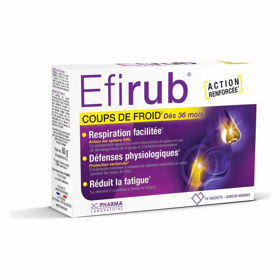
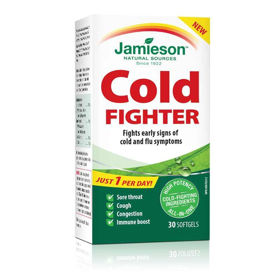
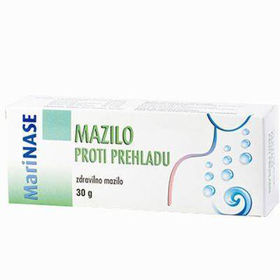
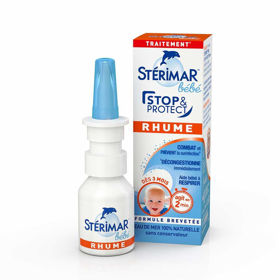
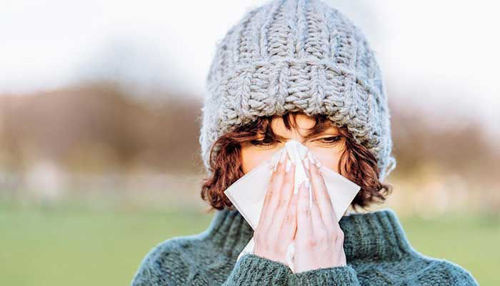


 Facebook
Facebook
 Instagram
Instagram
 info@moja-lekarna.com
info@moja-lekarna.com

